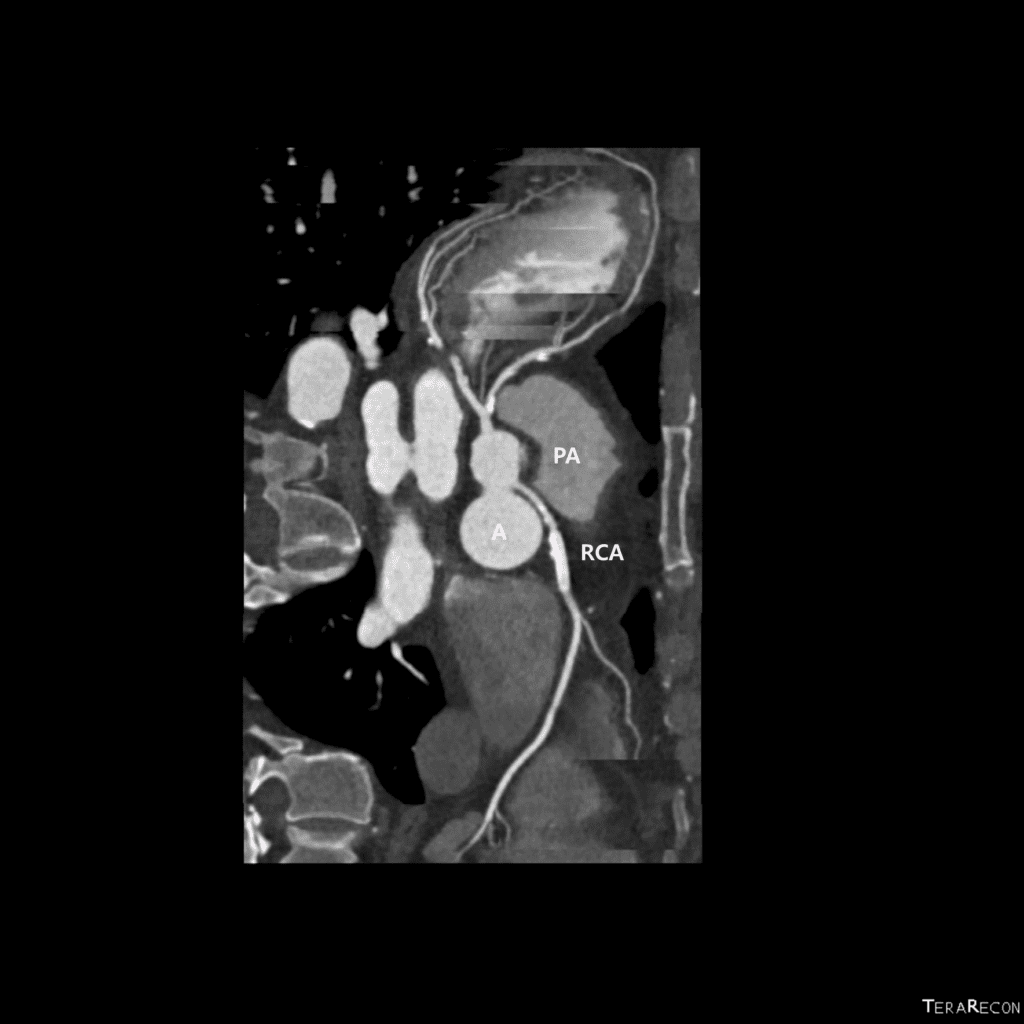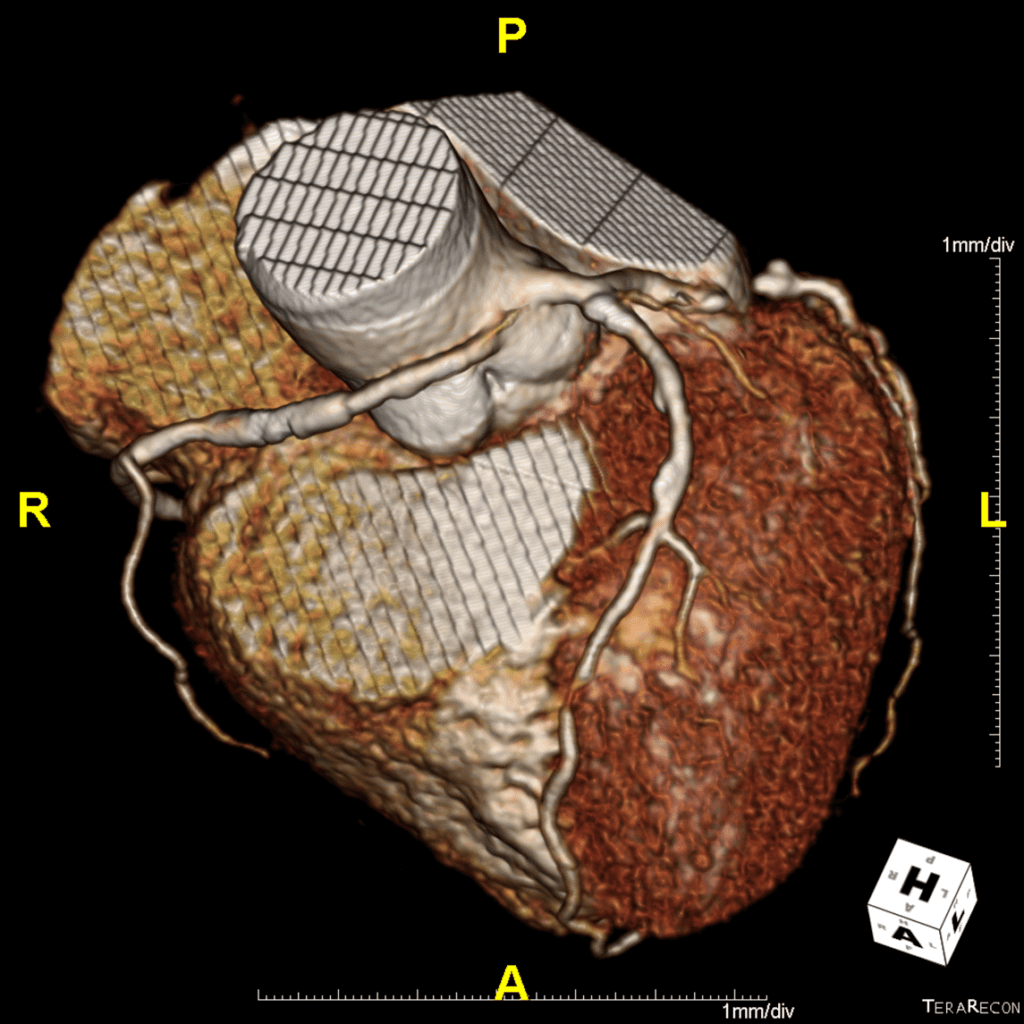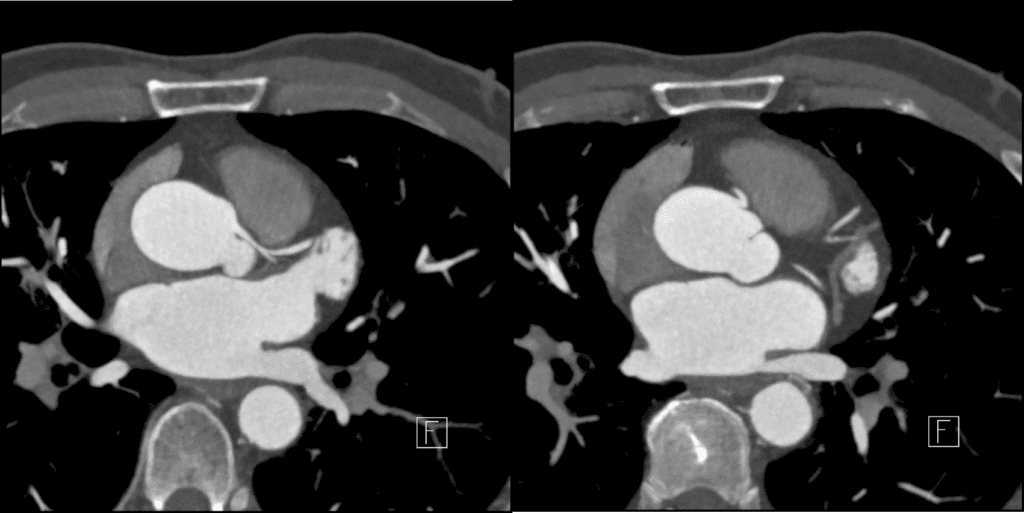I will introduce 2 cases of anomalous origin of coronary artery from opposite or noncoronary sinus
Case 1) Male, 62 years old presented with chest pain



Case 2) Male, 59 years old follow up coronary CT angio after percutaneous coronary intervention



Origin of the coronary artery or branch from opposite or noncoronary sinus and an anomalous course
- RCA arising from the left coronary sinus
- LCA arising from the right coronary sinus
- LCx or LAD arising form the right coronary sinus
- LCA or RCA arising from the noncoronary sinus
- In these anomalies, the coronary ostium may be at the normal level, or the involved artery may have a high takeoff

Figure 4) shows possible courses of the anomalous coronary artery, note that ‘interarterial course (a)’ can be associated with sudden cardiac death
The possible mechanism of sudden cardiac death is when dilation of the aorta occurs during exercise, the anomalous slit-like ostium for the RCA in the left sinus becomes narrower, possibly limiting coronary blood flow and resulting in myocardial infarction